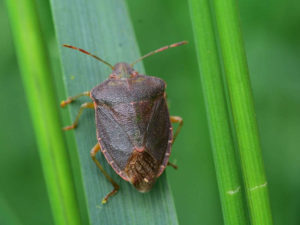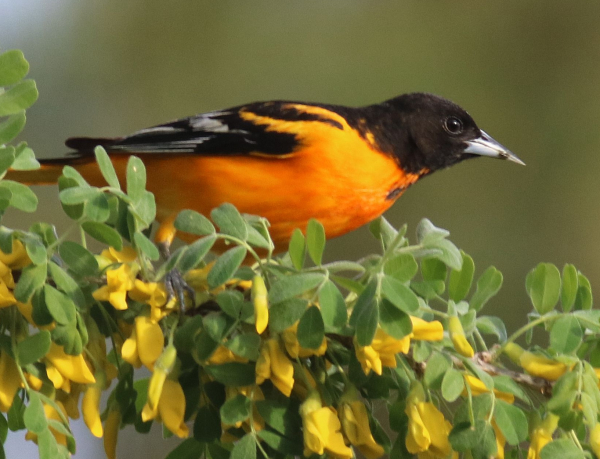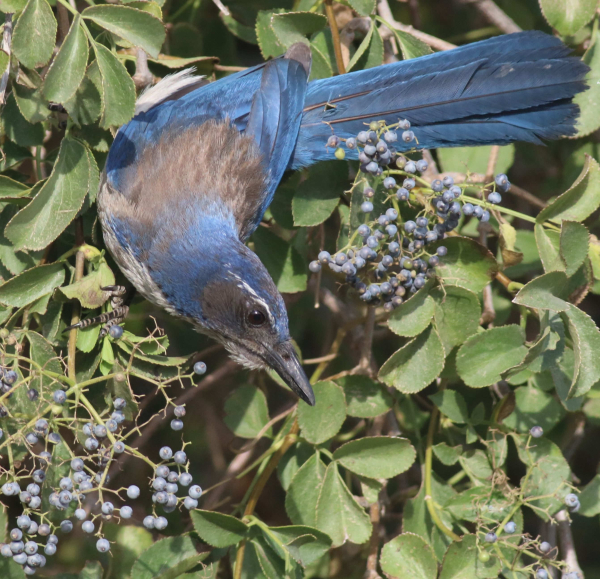Stink Bug Invasion
By Glen Wunderlich
Charter Member Professional Outdoor Media Association (POMA)
Autumn brings some of the most beautiful weather found anywhere on our planet and we’ve already experienced some of it the past few weeks. The deciduous trees are beginning their splendid display of red and orange color attracting thousands of tourists for the annual show courtesy of Mother Nature. However, there’s a fly in the ointment and it’s not a fly at all: pentatomids – a.k.a stink bugs.

Stinkin’ Bug
I first discovered these irritating insects years ago in my vegetable garden. At first, I had some misdirected affinity for them thinking they were a friendly bug that would prey on other harmful garden-variety insects. Wrong! They were the suckers killing my plants! And, I do mean suckers.
Pentatomids have piercing sucking mouthparts, and most are phytophagous, including several species which are severe pests on agricultural crops. All green plants are eaten by one or more species of phytophagous insects.
This is all too deep for me, so stink bugs it will be. And, if you haven’t figured it out yet, stomp on one and you’ll understand the origin of the moniker; the penetrating stench is over-powering.
The stink bug is considered an invasive species, or a pest of foreign origin, having been introduced to the United States from Eastern Asia in the mid-1990s. Since then, they have become most prevalent in the mid-Atlanta region, and have been identified in 44 states and the District of Columbia. Lucky us!
These freeloaders are looking for nice, warm surroundings for the winter months and have an innate ability to play hide-and-seek better than your average kid. If you look hard enough, you can find them in curtains, exhaust fans, cardboard boxes and even fireplaces.
If you are bugged by these rascals, spend some time inspecting the outside of your home for easy access points. Pay close attention to areas including around siding and utility pipes, behind chimneys, and underneath the wood fascia or other openings. Seal any cracks and holes that are found using a good quality silicone or silicone-latex caulk. Remember, however, that today’s vinyl siding is supposed to fit loosely so that it can expand and contract with temperature changes, and is therefore, a natural safe space for them. You can’t win this one.
Forget expensive, toxic sprays that’ll make money disappear faster than the bugs. I prefer a mixture of soapy water in a spray bottle for hard-to-reach areas, because it’s effective, inexpensive, and can be sprayed around pets and children without harm. Hand-held cordless vacuums provide a viable means of control, as well.
Stink bugs are also attracted to light, so minimizing extraneous lighting can help. Being squeaky clean with food and food waste is also important. You may also want to install screens on chimneys and attic vents. It’s also a good idea to check any boxes or containers before bringing them into homes.
September typically signals a change in stink bug behavior from active feeding to sheltering for the winter inside man-made structures. The heating system in your home can cause stink bugs to become tricked into activity before springtime. This is why you may see them buzz about the rooms of your house, as they react to temperature.
The circle of life is launched in the month of May, as they seek out plants and crops for feeding and sites to lay eggs – about the time we’ve assumed we’ve beaten them into submission. We all know the meaning of assumed, don’t we?






